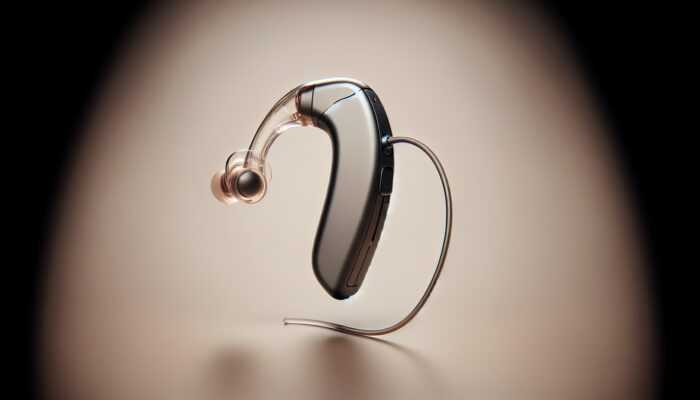Last Updated on 26/05/2025 by Admin
Uncovering the Vital Link Between Sinus Function and Ear Well-Being
Delving into the Intricate Structure of Sinuses and Ears
The remarkable intricacies of the human body expose a significant connection between sinuses and ears. At the heart of this relationship lies the Eustachian tube, a slender conduit that links the middle ear to the nasopharynx. This crucial passage plays a pivotal role in maintaining air pressure equilibrium and facilitating effective drainage between the sinuses and ears. When the Eustachian tube operates optimally, it equalises pressure, which is essential for proper sound transmission and the overall health of both the sinuses and ears. Preserving this balance is vital for preventing various complications that can arise from disruptions in this interconnected system.
Nevertheless, conditions such as sinusitis or allergies can lead to inflammation that disrupts this delicate equilibrium. When the sinuses experience inflammation, they can swell and obstruct the Eustachian tube, resulting in discomfort or pain in the ears. This understanding of anatomical connections not only highlights the interrelatedness of these two systems but also emphasises the importance of maintaining their health to avert complications. This further underscores the need for proactive healthcare measures.
For instance, in urban environments where respiratory illnesses are prevalent due to high levels of pollution, individuals may frequently encounter sinus problems that adversely affect their ear health. This cycle of inflammation and congestion illustrates the interconnected nature of our bodily systems and the necessity for holistic healthcare solutions that address multiple concerns simultaneously.
Understanding Sinusitis as a Precursor to Ear Complications
Sinusitis, defined by inflammation of the sinuses, is a common ailment that can substantially impact ear health. When the sinuses become inflamed, they often block the Eustachian tube, leading to pressure imbalances within the ear. This blockage frequently results in discomfort, ear pain, or even infections, creating a cascade of health issues. The pressure that builds up behind the eardrum can lead to fluid accumulation, creating an ideal environment for bacteria and potentially resulting in acute otitis media, a prevalent type of ear infection.
Sinusitis affects individuals across the globe, irrespective of age, with various environmental factors such as air quality and seasonal allergens impacting its prevalence. For example, people living in areas with high pollen counts or poor air quality may experience more frequent sinus issues, consequently heightening their risk of developing ear complications. This pattern is particularly evident in urban settings, where pollution and seasonal variations can exacerbate sinus conditions, leading to more pronounced ear-related problems.
Moreover, effective treatment for sinusitis often requires addressing any associated ear complications. Healthcare providers may recommend nasal decongestants or saline sprays to relieve pressure in both the sinuses and ears. Recognising the correlation between sinusitis and ear health empowers individuals to seek early intervention, thus reducing the likelihood of encountering more severe complications in the future.
The Dual Impact of Allergies on Sinus and Ear Health
Allergies can have a profound effect on both the sinuses and ears, creating a cascade of symptoms that can drastically affect quality of life. Common allergens such as pollen, dust mites, and pet dander provoke an immune response, leading to inflammation in the nasal passages and sinuses. This inflammation can block the Eustachian tube, resulting in ear discomfort or even infections, highlighting the interconnected nature of these health concerns.
Different geographic regions present unique challenges regarding allergens. For instance, residents in tropical areas may contend with mold-related allergies, while those in temperate climates may face seasonal pollen from flowering plants. This variation underscores the necessity for tailored allergy management strategies. Identifying specific allergens through testing can empower individuals globally to manage their symptoms effectively and reduce the risk of developing sinus and ear issues.
Additionally, effective management strategies may include regular cleaning to minimise allergen exposure, employing air purifiers, and adopting dietary changes that bolster overall immune health. By actively addressing allergies, individuals can alleviate their sinus and ear concerns, ultimately enhancing their overall health and well-being.
Recognising Symptoms Linked to Sinus-Related Ear Problems
Identifying Ear Pain Associated with Sinus Issues
Experiencing ear pain can be alarming, particularly when it is associated with sinus issues. The pressure stemming from inflamed sinuses can radiate to the ears, causing discomfort that many individuals may mistakenly attribute to an ear infection. This referred pain occurs when inflammation from sinusitis extends to the Eustachian tube, resulting in a sensation of fullness or pain in the ear, signalling a need for attention.
When individuals notice persistent ear pain alongside sinus symptoms such as nasal congestion or facial pressure, it is crucial to assess the situation carefully. This pain can vary in intensity and may be accompanied by additional symptoms like headaches or facial pressure. For instance, during allergy seasons, many individuals report heightened sensations of ear pain, exacerbated by the cumulative effects of sinus congestion and inflammation.
Cultural beliefs regarding ear pain can also diverge across various regions, influencing how individuals respond to these symptoms. In some cultures, home remedies such as warm compresses or herbal teas are favoured as initial treatments, while others may prioritise prompt medical consultation. Understanding the complex nature of ear pain can enhance awareness and treatment options for those affected, promoting a more holistic approach to ear and sinus health.
Examining the Connection Between Sinus Issues and Hearing Impairment
The relationship between sinus issues and hearing loss is a critical area of concern that is frequently overlooked. When sinus congestion occurs, it can lead to fluid accumulation in the middle ear, resulting in temporary hearing loss. This condition, commonly referred to as conductive hearing loss, is typically reversible; however, it can be distressing and disruptive to daily life.
Individuals may struggle to hear conversations or sounds clearly, leading to frustration and social withdrawal. This aspect is particularly significant in educational and professional settings, where effective communication is essential. For instance, students may struggle in classroom environments, while professionals may experience hindered work efficiency due to impaired auditory functions, negatively impacting their overall performance.
Globally, the prevalence of hearing loss linked to sinus issues can be exacerbated by environmental factors. High levels of pollution, for instance, may increase the incidence of respiratory ailments, thereby amplifying the risk of sinus problems and associated hearing loss. Communities can benefit from education regarding the importance of ear health and the potential consequences of untreated sinus issues, encouraging proactive measures to mitigate these risks effectively.
Understanding the Relationship Between Tinnitus and Sinus Congestion
Tinnitus, characterised by persistent ringing or buzzing in the ears, can often be aggravated by sinus congestion. The pressure that builds in the sinuses can affect the auditory system, intensifying these unwanted sounds. For many individuals, tinnitus is more than just a nuisance; it can be a significant source of distress, impacting daily life and mental well-being.
The interplay between sinus congestion and tinnitus highlights the importance of understanding underlying health conditions. Those experiencing chronic sinusitis may find that their tinnitus fluctuates in tandem with sinus symptoms. This relationship is not confined to specific geographic areas; tinnitus can affect individuals worldwide, irrespective of climate or lifestyle, underscoring the universal nature of this health issue.
Management strategies for tinnitus related to sinus issues typically focus on addressing the root cause: the sinus inflammation. Techniques such as nasal irrigation, steam inhalation, and antihistamines can provide much-needed relief. Additionally, sharing experiences and coping strategies within community support groups can foster resilience among those dealing with tinnitus, creating a sense of solidarity and understanding among individuals facing similar challenges.
Thorough Diagnostic Approaches to Enhance Sinus and Ear Health
Conducting an In-Depth Medical History and Symptom Analysis for Precise Diagnosis
Diagnosing the connection between sinus issues and ear problems commences with a comprehensive medical history and thorough symptom analysis. Healthcare providers prioritise gathering detailed information about patients’ experiences, focusing on the onset, duration, and nature of their symptoms. This initial assessment is crucial for pinpointing the underlying causes of discomfort and determining the appropriate diagnostic pathway forward.
Patients may be asked about their experiences with sinus congestion, nasal discharge, and the presence of ear pain. Additionally, any history of allergies, respiratory infections, or environmental exposures can provide vital insights into the patient’s condition. Global variations in healthcare access can influence how individuals approach this diagnostic process; for instance, in rural communities, patients might rely on primary care providers to identify the link between their symptoms due to limited access to specialists.
Moreover, cultural beliefs surrounding health and wellness can shape how patients articulate their symptoms. In some regions, individuals may downplay discomfort or rely on traditional remedies before seeking professional help. Educating communities about the significance of transparent communication with healthcare providers can enhance the effectiveness of diagnosis and management of sinus and ear issues.
Leveraging Advanced Imaging Techniques for Accurate Diagnosis
Imaging techniques are instrumental in accurately diagnosing sinus and ear conditions. Advanced technologies such as CT scans and MRIs provide detailed images of the sinuses and ears, enabling healthcare providers to identify structural abnormalities, inflammation, or fluid accumulation. These diagnostic tools are particularly valuable in complex cases where traditional examinations may not yield clear answers.
Globally, the accessibility of these imaging techniques can vary significantly. In urban areas, patients may find it easier to access advanced diagnostic tools, whereas those in rural or underserved regions may face challenges. This discrepancy underscores the necessity of advocating for equitable healthcare access, ensuring that all individuals have the opportunity to receive accurate diagnoses and effective treatments for their conditions.
Furthermore, interpreting imaging results requires a skilled healthcare provider who understands the intricacies of both the sinus and auditory systems. Collaborative approaches among specialists, including ENT doctors and radiologists, can enhance diagnostic precision, leading to targeted treatment plans tailored to the individual’s unique needs and circumstances.
Conducting Comprehensive Ear and Sinus Examination Techniques
A thorough physical examination of the ears and sinuses is fundamental in diagnosing conditions related to the link between sinus issues and ear problems. During this examination, healthcare providers assess for signs of infection, inflammation, or structural abnormalities. Tools such as otoscopes are employed to visualise the ear canal and tympanic membrane while also examining the nasal passages for swelling or obstruction.
Cultural contexts can influence the approach to physical examinations. Some communities may prioritise holistic assessments, integrating traditional practices alongside modern medical evaluations. This blend of approaches can provide a comprehensive understanding of a patient’s health, fostering trust and collaboration between healthcare providers and patients.
Additionally, healthcare providers often educate patients on self-examination techniques, encouraging proactive monitoring of symptoms and timely intervention when issues arise. Empowering individuals with knowledge can lead to earlier detection of potential problems, ultimately improving health outcomes related to both sinus and ear health.
Utilising Laboratory Tests as Essential Tools for Diagnosing Sinus and Ear Conditions
Laboratory tests serve as invaluable instruments in diagnosing sinus and ear conditions, helping to identify underlying infections or allergies that contribute to patients’ symptoms. Tests such as blood panels, cultures, and allergy assessments can yield essential information that guides treatment decisions. For instance, identifying specific pathogens through culture can inform targeted antibiotic therapy, leading to improved patient outcomes and expedited recovery.
In regions with a high prevalence of allergic conditions, allergy testing can be particularly significant. Understanding which allergens trigger symptoms empowers patients to take proactive measures to alleviate their health issues. For instance, in areas where pollen is a prominent allergen, individuals may benefit from localized strategies to minimise exposure during peak seasons, improving their quality of life.
Moreover, integrating laboratory test results with clinical evaluations creates a comprehensive picture of the patient’s health. This combined approach enables healthcare providers to develop personalised treatment plans that address not only the symptoms but also the underlying causes of sinus and ear problems, fostering better long-term health outcomes.
Implementing Effective Allergy Testing and Management Strategies
Allergy testing is a crucial component in understanding the interplay between sinus and ear health. By identifying specific allergens that trigger symptoms, patients can take targeted steps to manage their conditions effectively. Various testing methods, such as skin prick tests or blood tests, can help pinpoint sensitivities to substances like mould, dust mites, or pet dander.
In many parts of the world, the prevalence of allergies has risen dramatically, making effective management essential. For example, in urban areas where pollution and allergens coexist, individuals must navigate complex environmental challenges that exacerbate their symptoms. Awareness campaigns can educate communities about the importance of allergy management, providing tools to reduce exposure and alleviate symptoms effectively.
Management strategies may include allergen avoidance, pharmacotherapy, and immunotherapy. For instance, implementing air purifiers in homes or schools can significantly reduce allergen levels, promoting better sinus and ear health. Additionally, healthcare providers can guide patients on lifestyle modifications, such as dietary changes or environmental adjustments, to enhance overall well-being and resilience against allergens.
Evaluating Treatment Options for Sinus and Ear Issues
Utilising Medications for Effective Relief from Sinus and Ear Discomfort
Effective treatment options for sinus and ear problems often involve a combination of medications designed to alleviate symptoms and address underlying causes. Antibiotics may be prescribed for bacterial infections, while decongestants can relieve nasal congestion, thereby improving airflow in the sinuses and Eustachian tube. Antihistamines are also commonly recommended to reduce allergic responses that contribute to inflammation, offering much-needed relief.
The availability of these medications can vary significantly across different regions. In some countries, over-the-counter access to decongestants and antihistamines is readily available, allowing for prompt self-management of symptoms. Conversely, in other areas, patients may face strict regulations around pharmaceutical access, highlighting the need for global health initiatives aimed at improving access to necessary treatments for sinus and ear health.
Moreover, educating patients on the appropriate use of these medications is crucial for effective treatment outcomes. Misuse or over-reliance on decongestants, for example, can lead to rebound congestion, exacerbating the cycle of sinus and ear problems. Empowering individuals with knowledge about safe medication practices fosters more effective and responsible treatment approaches, ultimately enhancing patient care.
Exploring Home Remedies and Lifestyle Changes for Lasting Relief
In addition to conventional treatments, many individuals turn to home remedies and lifestyle changes to alleviate symptoms of sinus and ear problems. Techniques such as nasal irrigation, steam inhalation, and maintaining hydration can provide significant relief from sinus congestion. For instance, using a saline solution to irrigate the nasal passages can effectively clear mucus and allergens, thereby improving overall sinus health and comfort.
Cultural practices also play a significant role in managing these conditions. In various regions, traditional remedies such as herbal teas or essential oils are often utilised as complementary treatments to medical interventions. These practices not only reflect cultural heritage but can also offer effective symptom relief when implemented appropriately and in conjunction with conventional treatments.
Moreover, adopting lifestyle changes, such as quitting smoking or reducing exposure to known allergens, can have a lasting positive impact on sinus and ear health. Individuals who actively engage in preventive measures are likely to experience fewer episodes of sinusitis and related ear issues, leading to improved overall quality of life and well-being.
Determining When Surgical Intervention is Necessary
In some instances, surgical intervention may become necessary to address severe sinus and ear issues that do not respond to conservative treatments. Surgical options, such as sinus surgery or the placement of ear tubes, can provide lasting relief for individuals suffering from chronic conditions. For example, sinus surgery may involve removing polyps or correcting structural abnormalities to improve sinus drainage, thus alleviating associated ear problems.
While surgery can offer significant benefits, it is essential to carefully consider the associated risks and benefits. Informed decision-making is crucial, and patients should engage in open discussions with their healthcare providers about their options. Surgical interventions may be more common in regions where chronic sinusitis is prevalent, highlighting the need for comprehensive healthcare approaches that consider both medical and surgical management options.
Additionally, postoperative care is vital to ensure a successful recovery. Patients must adhere to guidelines and attend follow-up appointments to monitor their progress and address any complications that may arise during the healing process, ensuring optimal outcomes for their sinus and ear health.
Exploring Alternative Therapies for Holistic Relief from Sinus and Ear Issues
As interest in holistic health continues to grow, many individuals are exploring alternative therapies for relief from sinus and ear issues. Practices such as acupuncture, herbal remedies, and chiropractic care have gained popularity as complementary treatments to conventional approaches. These therapies can offer a unique perspective on health, focusing on the body’s natural healing processes and promoting overall well-being.
Acupuncture, for instance, has been shown to relieve sinus pressure and enhance overall well-being. By targeting specific pressure points, acupuncture aims to improve circulation and reduce inflammation, providing a sense of relief for those suffering from sinus and ear problems. Similarly, certain herbal remedies, such as eucalyptus or peppermint, can be utilised in steam inhalation to effectively open nasal passages and alleviate congestion.
It is essential, however, for individuals to approach alternative therapies with caution and seek guidance from qualified practitioners. While these methods can be beneficial, they should complement, rather than replace, conventional medical treatments. A collaborative approach to healthcare that integrates both traditional and alternative therapies can provide comprehensive support for individuals dealing with sinus and ear issues, enhancing their overall health and quality of life.
Implementing Preventive Strategies for Optimal Sinus and Ear Health
Effective Strategies for Maintaining Excellent Sinus Health
Maintaining good sinus health is essential for preventing issues that can adversely affect the ears. Regularly cleaning the nasal passages through techniques such as saline sprays or using neti pots can help reduce mucus buildup and clear allergens. Moreover, avoiding irritants such as smoke, strong odours, and pollutants can significantly improve sinus health, contributing to overall well-being and reducing the risk of complications.
In various parts of the world, climate and environmental factors can influence sinus health. For instance, individuals living in high-humidity areas might face greater challenges with mould and allergens, necessitating proactive measures to maintain sinus health. This awareness encourages individuals to tailor their practices to suit their specific environments, fostering a more personalised approach to sinus care.
Additionally, seasonal changes can impact sinus health, prompting individuals to stay vigilant during peak allergy seasons. Staying informed about local pollen counts and engaging in preventive practices during these times can help mitigate symptoms of sinusitis and prevent complications that may extend to ear health, promoting a healthier lifestyle overall.
Effective Strategies for Safeguarding Ear Health
Protecting ear health is a vital aspect of preventing complications related to sinus issues. Simple practices, such as avoiding exposure to loud noises, can significantly reduce the risk of ear damage. In environments where loud sounds are prevalent, such as concerts or construction sites, utilising earplugs or noise-cancelling headphones can help safeguard auditory health, preserving hearing capabilities over time.
Keeping the ears dry is also crucial, particularly for individuals prone to ear infections. After swimming or showering, ensuring that the ears are adequately dried can prevent moisture buildup, which creates an environment conducive to bacterial growth and ear complications. This straightforward practice can play a significant role in maintaining ear health.
Moreover, ear hygiene practices can vary globally, influenced by cultural beliefs and practices. Educating communities about effective ear care can empower individuals to take proactive steps in protecting their ear health. Simple measures, such as regular cleaning and awareness of environmental factors, can have a profound impact on preventing ear problems linked to sinus issues, enhancing overall health.
Comprehensive Allergen Management Strategies for Better Health
Identifying and managing allergens is a critical strategy for reducing the risk of sinus and ear problems. By pinpointing specific allergens that trigger symptoms, individuals can proactively minimise exposure to these irritants. For those experiencing seasonal allergies, staying indoors during peak pollen times and utilising air purifiers can significantly alleviate symptoms, enhancing their quality of life.
In diverse geographical regions, the types of allergens may vary widely. For instance, individuals living in coastal areas may contend with heightened sensitivity to mould spores, while those in arid climates may struggle with dust allergies. Understanding local allergens is essential for effective management strategies tailored to individual needs and environmental conditions.
Furthermore, incorporating dietary changes that support immune health can bolster the body’s response to allergens. Foods rich in omega-3 fatty acids, antioxidants, and vitamins can enhance overall resilience, reducing the severity of allergic reactions. By fostering a holistic approach to allergen management, individuals can significantly improve their sinus and ear health outcomes, contributing to better overall well-being.
Recognising When to Seek Professional Medical Assistance
Identifying Severe Symptoms That Necessitate Immediate Attention
Recognising severe symptoms is vital for promptly addressing sinus and ear problems. Symptoms such as a high fever, intense ear pain, or persistent headaches warrant immediate medical attention. Ignoring these signs can lead to complications that may escalate into more serious conditions, including chronic infections or potential hearing loss, underscoring the importance of timely intervention.
In certain regions, cultural attitudes towards seeking medical help can influence patient behaviour. Some communities may prioritise traditional remedies over professional care, potentially delaying necessary treatment. Educating individuals about the importance of recognising warning signs and seeking timely intervention can foster better health outcomes, encouraging proactive health-seeking behaviours.
Furthermore, creating awareness campaigns that target high-risk populations can empower individuals to take charge of their health. In communities with limited healthcare access, leveraging local resources and support networks can encourage proactive health-seeking behaviours, ultimately leading to improved outcomes related to sinus and ear health.
The Critical Importance of Prompt Medical Intervention
Timely medical intervention is paramount for preventing complications associated with sinus and ear issues. Early treatment can mitigate the severity of symptoms, reducing the risk of chronic conditions developing. For example, promptly addressing a sinus infection can prevent it from spreading to the ears, thereby diminishing the likelihood of complications such as otitis media.
Globally, disparities in access to healthcare can impact the timeliness of intervention. Regions with limited healthcare resources may experience higher rates of chronic sinusitis and related ear problems due to delayed treatment. Advocacy for increased access to healthcare, along with educational initiatives that empower individuals to seek care, can significantly improve health outcomes for sinus and ear issues.
Additionally, ongoing monitoring and follow-up care are critical components of successful treatment. Patients should engage in open dialogues with their healthcare providers to ensure that treatment plans are effective and adjusted as necessary, promoting better health outcomes in the long run.
Making Informed Decisions About Specialists for Effective Treatment
Choosing the right specialist is crucial for effectively diagnosing and treating sinus and ear issues. ENT (Ear, Nose, and Throat) specialists possess the expertise needed to evaluate and manage conditions affecting these interconnected systems. Their comprehensive understanding of anatomy and physiology equips them to provide targeted treatments that address the root cause of symptoms, improving patient care.
Patients should seek specialists who prioritise collaborative care, integrating input from other healthcare providers as needed. This multidisciplinary approach enhances the overall quality of care and ensures that all aspects of a patient’s health are considered in treatment decisions, leading to improved outcomes.
Furthermore, patients are encouraged to conduct thorough research when selecting a specialist, reviewing their qualifications and patient feedback. In communities where access to ENT specialists may be limited, telehealth options can offer valuable alternatives, expanding access to expert care regardless of geographic location and improving health equity.
Understanding When Symptoms Persist Despite Home Treatment
If symptoms persist despite home treatment efforts, it is crucial to consult a healthcare provider to avoid potential complications. Conditions such as chronic sinusitis or recurrent ear infections may require more intensive intervention. Recognising when home remedies are insufficient is a key aspect of effective self-care and proactive health management.
Patients should closely monitor their symptoms, noting any changes in severity or frequency. Engaging in open discussions with healthcare providers about concerns can lead to more accurate diagnoses and tailored treatment plans that cater to individual needs and circumstances.
Moreover, educating communities about recognising the limitations of home treatments can empower individuals to seek professional help when necessary. Awareness of the importance of timely medical intervention can ultimately improve health outcomes related to sinus and ear health, fostering a healthier and more informed community.
Preparing Effectively for Your Doctor’s Appointment
Proper preparation for a doctor’s visit can significantly enhance the diagnostic process and overall patient experience. Patients should compile a comprehensive list of symptoms, medications, and any previous treatments to facilitate clear communication with their healthcare providers. This information can help doctors make accurate diagnoses and develop effective treatment plans tailored to individual needs.
Additionally, individuals should consider bringing questions regarding their symptoms, potential treatment options, and lifestyle modifications that could improve their health. This proactive approach fosters a collaborative relationship with healthcare providers, encouraging open dialogue and shared decision-making, which are essential for effective treatment.
In regions where healthcare access may be limited, preparing for doctor visits can maximise the value of each consultation. Patients should view their visits as opportunities to empower themselves with knowledge and tools for managing their health effectively, ultimately leading to better health outcomes and improved quality of life.
Frequently Asked Questions Regarding Sinus and Ear Health
What are the common symptoms of sinus issues impacting the ears?
Common symptoms include ear pain, hearing loss, and a sensation of fullness in the ears, often accompanied by sinus congestion and pressure, indicating a potential link between these health concerns.
How can sinusitis result in ear infections?
Inflammation resulting from sinusitis can block the Eustachian tube, trapping fluid in the middle ear and creating an environment conducive to bacterial growth, which can lead to painful ear infections.
Are there specific allergens that affect both sinus and ear health?
Yes, common allergens such as pollen, dust mites, and pet dander can inflame the sinuses, obstruct the Eustachian tube, and result in ear issues, highlighting the interconnected nature of these health problems.
When should I seek medical assistance for sinus or ear issues?
Seek medical help if you experience severe symptoms, such as a high fever or severe pain, or if symptoms persist despite home treatment efforts, indicating the need for professional evaluation.
What are some effective home remedies for sinus and ear relief?
Effective home remedies include nasal irrigation, steam inhalation, staying hydrated, and using warm compresses to alleviate pain and congestion, providing relief from sinus and ear discomfort.
How can I prevent sinus and ear problems related to allergies?
Preventive measures include managing allergens, utilising air purifiers, and adopting a healthy lifestyle to strengthen the immune system, reducing the risk of sinusitis and associated ear issues.
What diagnostic approaches are employed for sinus and ear issues?
Diagnostic approaches include reviewing medical history, conducting physical examinations, utilising imaging techniques like CT scans, and performing laboratory tests to identify infections or allergies contributing to symptoms.
What treatment options are available for sinus and ear problems?
Treatment options may include medications such as antibiotics and decongestants, home remedies, lifestyle changes, and, in severe cases, surgical interventions to alleviate persistent symptoms.
How can I select the right specialist for sinus and ear issues?
Look for an experienced ENT specialist who prioritises collaborative care and has a good reputation based on patient feedback and qualifications, ensuring comprehensive treatment for sinus and ear conditions.
What lifestyle changes can enhance sinus and ear health?
Lifestyle changes include avoiding smoking, managing exposure to allergens, maintaining good hydration, and practising regular nasal hygiene to promote better sinus and ear health.
Explore our world on X!
The post Sinus Issues and Their Connection to Ear Problems appeared first on The Microsuction Ear Wax Removal Network.














